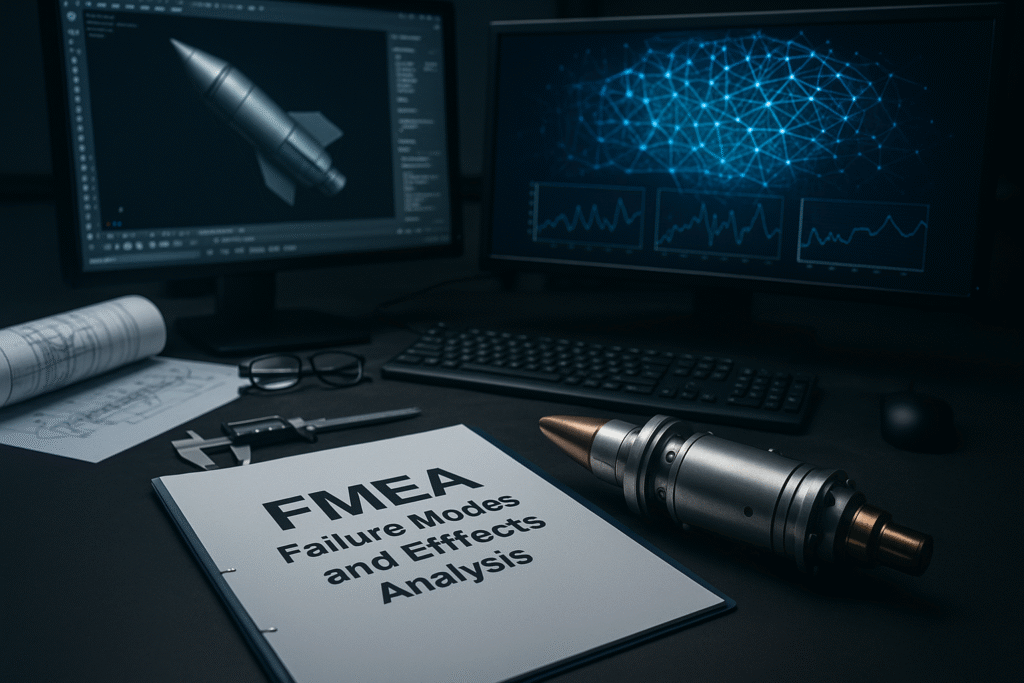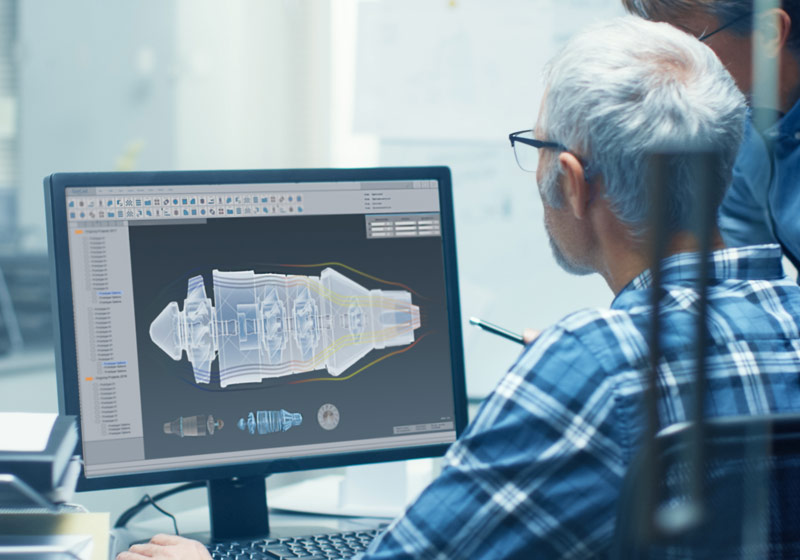Executive Summary
In aerospace and defense, every system is mission-critical — and failure isn’t an option. Traditional Failure Mode and Effects Analysis (FMEA) has long been the backbone of safety engineering, but it’s struggling to keep pace with today’s complex, software-driven systems.
AI-powered FMEA changes that by identifying 65% more potential failure modes and reducing analysis time by up to 80%, giving engineers a decisive edge in reliability, compliance, and risk prevention.
The Limits of Traditional FMEA
Classic FMEA, governed by MIL-STD-1629A, helps engineers predict how components might fail and what effects those failures could have. Yet in modern systems — with millions of data points and interdependent subsystems — human-only analysis misses subtle interactions and cascading failure chains.
Problems include:
- Cognitive Overload: Engineers can’t feasibly map millions of interactions.
- Static Analysis: Traditional methods assume steady conditions, not dynamic missions.
- Blind Spots: Sequential analysis overlooks cross-system dependencies.
How AI-Powered FMEA Works
AI agents enhance traditional FMEA by continuously learning from historical and operational data, identifying patterns invisible to manual analysis.
Machine Learning Applications:
- Supervised Models predict high-risk component combinations with 90%+ accuracy.
- Unsupervised Learning reveals hidden correlations across telemetry and maintenance logs.
- Deep Learning Networks process multiple streams — from sensors to environment data — for real-time insights.
AI doesn’t replace human expertise; it multiplies it, turning static safety reviews into living, learning systems.
Case Studies: From Prevention to Proof
- Satellite Propulsion Systems
AI identified 312 additional failure modes missed by manual FMEA, including valve-cycling interactions that could have caused catastrophic rupture — saving $400M in potential losses. - Fighter Flight Control Systems
Machine learning discovered a rare GPS-INS drift interaction under high-G maneuvers. Design modifications cut failure risk by 89% and prevented potential aircraft loss. - Launch Vehicle Engines
AI uncovered cascading thermal-stress failures before first launch, leading to 100% mission success across 12 flights.
Implementation Roadmap
Phase 1 — Assess & Prepare
Gather historical failure data, align stakeholders, and identify high-value systems.
Phase 2 — Pilot & Validate
Train AI models on known failure datasets and benchmark against traditional FMEA results.
Phase 3 — Deploy & Scale
Integrate AI into live safety workflows, monitor performance, and scale across platforms.
Phase 4 — Continuous Learning
Feed operational data back into AI systems for predictive maintenance and adaptive safety analytics.
Compliance & Certification
AI-powered FMEA aligns with DO-178C, AS9100, and DFARS standards. Explainable AI frameworks ensure transparency and audit readiness — a key requirement for safety-critical defense programs.
Quantifiable Impact
- Failure detection: +65% more modes identified
- Time reduction: 80% faster analysis
- Reliability gain: +23% improvement
- ROI: Payback within 6–18 months
The Future of Predictive Safety
The next frontier combines AI-FMEA with digital twins, federated learning, and quantum-ready modeling for real-time safety validation across fleets. Organizations embracing AI-powered safety now will lead the next generation of aerospace reliability.
Conclusion
Failure analysis is evolving from reactive to predictive.
AI-powered FMEA doesn’t replace human insight — it reinforces it, turning risk management into a proactive, data-driven advantage.
Prevent failure before it starts.
Contact Netray’s aerospace AI specialists to design your tailored safety analysis framework and ensure mission-ready reliability.



